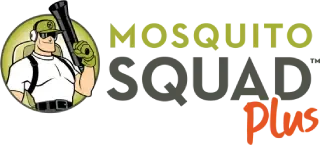They’re Back. Stink Bugs Return.
Posted by Mosquito Squad
September 28, 2012
I read all of the service requests from the Mosquito Squad website and lately I’ve noticed a trend: the dreaded stink bugs have returned! For those of you that have heard about this “so-called invasion,” but haven’t seen it for yourself, trust me, it’s real.
Stink bugs are native to China, Japan, Korea and Taiwan and weren’t found in the United States until 1998. The pest was accidentally brought to the East Coast in some kind of shipping crate and has since thrived in its new environment. According to some researchers, brown marmorated stink bugs are now present in 38 states.
Any guesses as to why they are called stink bugs? To state the obvious, it’s because they stink. Like skunks, stink bugs release an odor when they feel threatened. For stink bugs, it is released via glands on their stomach. I did some research to see what they stink like and the results vary widely. Many online posters say they have a strong bad stench of cilantro, while others have posted everything from rubber, rotten cheese and chemicals. If squashed, the stink bug will stink, beware!
While stink bugs are active throughout the spring and summer months, the cool fall weather drives them to find shelter for the winter. According to msnbc, “in the fall, the stink bugs start to look for shelter in warm, indoor” areas. They can make their way into the home through any area that isn’t completely sealed. Homeowners have reported them coming in through everything from cracks in their door frames to underneath their siding. Although no one likes a massive amount of bugs in their home, stink bugs don’t cause damage to a home’s structure. Most of the time they hide in small or dark areas like attics, but the warmth of the house may cause them fly around and be more active.
Stink bugs are much more destructive outdoors than in, especially for farmers. Ames Herbert, an entomologist a Virginia Tech explains that “about anything that makes a seed or a fruit, they’ll eat.” For years, the shield-shaped bugs have been ruining crops in China and Japan and The US Apple Association estimates that in 2010, stink bugs cost apple farms over $37 million dollars.
As stink bugs become more prevalent in the United States, studies are being conducted on predators. In China, its primary predator is a specific type of wasp. This wasp is being tested now and may be introduced in the U.S. sometime next year to slow the stink bug population growth. Additionally, other wasps, spiders and praying mantises have been observed attacking stink bugs.
Until the invasion stops, some of our Mosquito Squad offices offer a stink bug treatment that will kill the pests before they enter your home.
